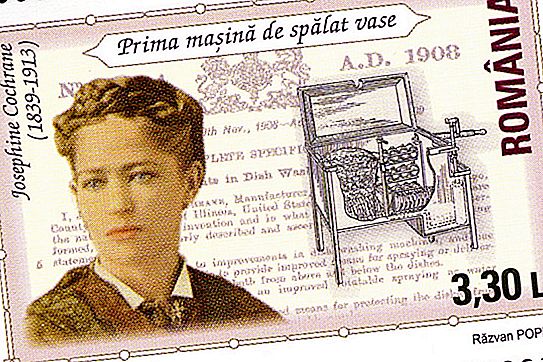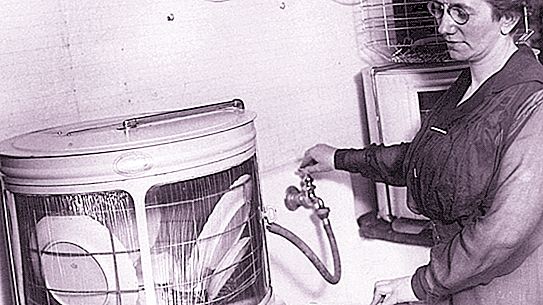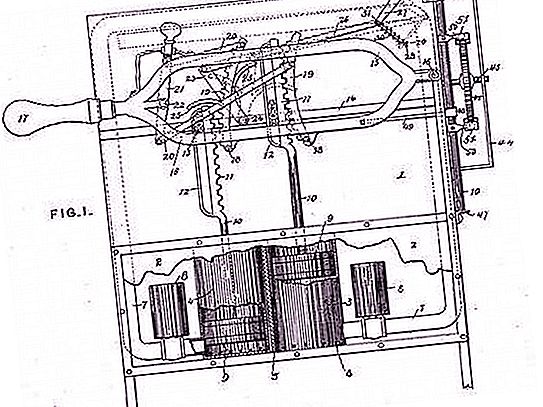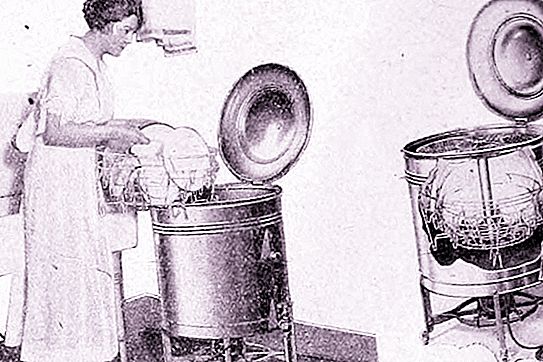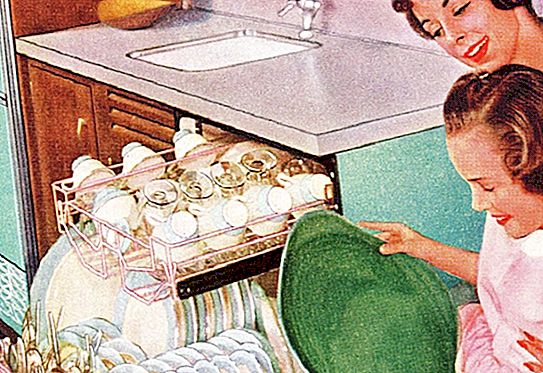Josephine Cochrane is an American inventor who patented the design of the first commercially successful dishwasher in 1886. Earlier (1850), a dishwashing device was introduced by Joel Houghton, but his model was imperfect and not suitable for practical use.
Biography
Josephine Cochrane was born March 8, 1839 in Ashtabula County, Ohio. Childhood passed in the city of Valparaiso, Indiana. Her father, John Garis, was an engineer from Chicago who invented a hydraulic pump to drain swamps. Her mother, Irene Fitch, died early, and the girl was raised by her father.
Interestingly, the great-grandfather of the famous American was also a famous inventor. John Fitch received a US patent for the development of the ship in 1791. By the way, in many sources erroneous information is indicated that this is the first patent for the design of the ship in America and even in the world.
When Josephine Cochrane grew up, her father sent her to a private high school in Indiana. Later, the school burned down, and the future inventor moved to live with her sister in Shelbyville, Illinois. There she graduated from high school.
A family
The biography of Josephine Cochrane abruptly changed on October 13, 1858. On this significant day, the 19-year-old beauty was married to William Cochran (1831-1883), who at that time turned 27 years old. The husband was not from a simple family. He began his career as a trader, later worked as a clerk for 16 years, was a member of the Masons society, was a member of various committees of the Democratic Party.
Funny fact: a respectable gentleman fell ill with the “gold rush” when, in the 19th century, placers of native gold were discovered in California. From 1853 to 1857, William worked at the mines in the hope of getting rich, but, like thousands of “unlucky people, ” he returned home with nothing, but with big debts. Upon returning to Shelbyville, he opened a convenience store and textile store.
The vicissitudes of fate
The couple had a son, Halle, who died at the age of two. After this tragic event, Josephine Cochrane and her husband founded the Unitarian Church Society in Shelbyville.
In 1870 they moved to a large house. By the way, the girl loved to have fun. She often gathered company of friends. But at the same time, she terribly did not like family responsibilities familiar to women: washing, cooking, washing dishes. In the future, her laziness will lead to a wonderful invention that has made life easier for thousands of housewives.
In 1883, her husband died when Josie was 44 years old. After William's death, she changed the spelling of her surname to Cochrane (instead of Cochran).
Great achievement
Josephine Cochrane, having lost the breadwinner, found herself in an unpleasant situation. William left her alone with big debts. They had to be given away. In addition, there was not enough money to pay for the work of the servants, and yet a large collection of porcelain needed regular care. As the daughter and great-granddaughter of famous engineers, Josie decided to come up with the thing she needed so much - a mechanical dishwasher.
The business was progressing famously. On paper, she drew a design very thoughtful for that time:
- The dishes were placed in a compartment of wire.
- The compartment itself was placed in a special cage.
- That, in turn, sank into the copper bathroom.
- The engine (hand-driven) was pressurizing, and jets of hot soapy water doused the dishes.
- At the final stage, plates, cups and other saucers were doused with clean water.
The dishes remained in the device, where they dried out from the residual heat of the machine. It only remained to get porcelain and put it on the shelves.
Dream come true
It’s not enough to draw a device; it needs to be embodied in a tangible image. There were problems with this. Josephine Cochrane willy-nilly needed assistant mechanics. The first few men whom she tried to hire for the construction of the mechanism, considered the design of the lady ill-conceived and offered their own solutions. Ambitious Josie did not like this turn of events.
Finally, she hired a man named George Butters. He worked as a mechanic on the Illinois Central Railroad and was on the “you” with the machinery. The barn in the backyard of the house acted as a workshop. In the end, George, with the active participation of the inventor, built a car. She passed the tests in the master kitchen with honor.
Inspired by Success
Josephine Cochrane filed a patent application with the US Patent Office, which she received on December 28, 1886 under the number 355.139. The previously unsuccessful dishwasher was patented in 1850 by Joel Houghton. It was made of wood, and the process of washing dishes consisted of spraying water with a crankshaft, which had to be manually untwisted by the hostess or the dishwasher.
Josie founded her own company and signed a contract with Tait Manufacturing to build the first batch of dishwashers. Butters acted as manager.
In 1893, the inventor showed and demonstrated the device at the Columbia Exhibition in Chicago, where it became a hit and received the main prize. It is interesting that the first batch of 9 cars was immediately bought by cafes and restaurants that worked at the exhibition.
